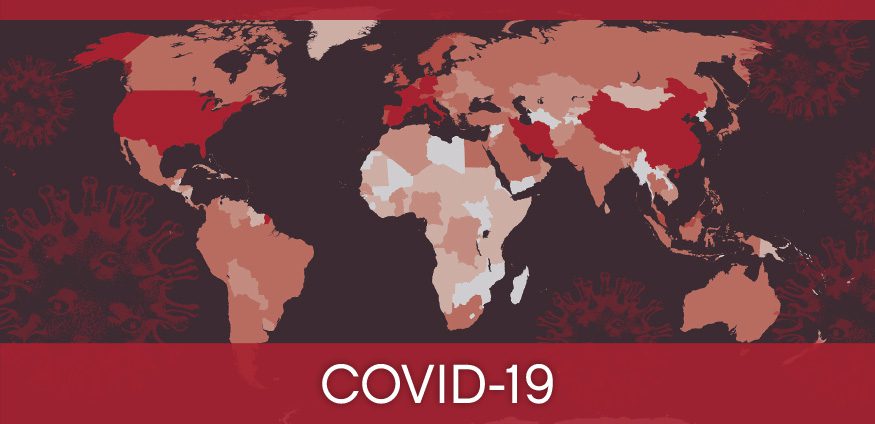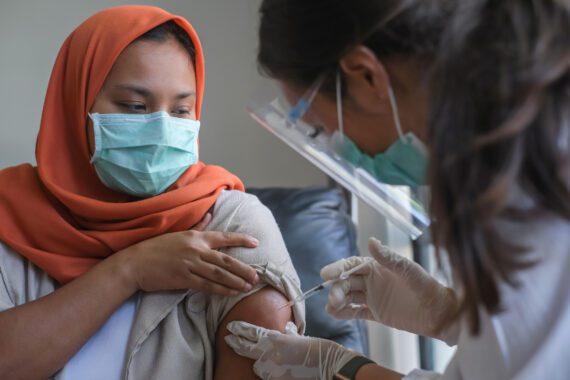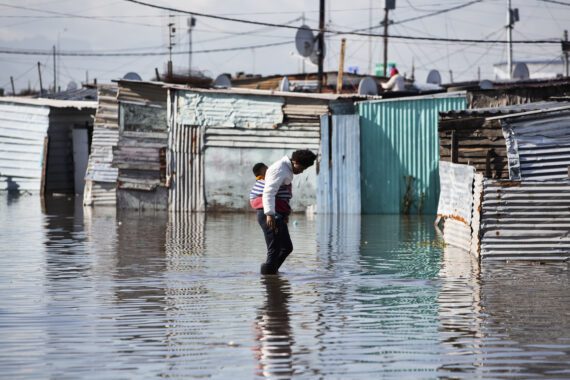This is the third in a three-part blog series on race, hunger, and the novel coronavirus (COVID-19). The pieces have focused on the impact of COVID-19 in the African American, Latino/a, and Indigenous communities, respectively.
By Marlysa D. Gamblin
Although they were the first communities in what is now known as the United States, Indigenous communities in urban and rural areas are often the last remembered in public policy. This is true particularly in times of crisis, including the current COVID-19 pandemic. As of April 14, 2020, the Indian Health System had confirmed more than 1,100 cases of COVID-19 and more than 20 deaths. In addition, Indigenous people living in urban areas, including Salt Lake City, San Jose, and Seattle, are contracting the virus at high rates. These statistics are expected to continue to worsen.
There are many factors that make Indigenous communities more vulnerable to the virus. Most are centered on the historical and structural racism that Indigenous communities in this country have confronted, starting with European invasion, violence, colonialism, and land seizures that date to 1565 and continuing today. Bread for the World Institute emphasizes the importance of applying a racial equity lens to efforts to end hunger—a goal that now includes responding to the most recent global challenge, the COVID-19 pandemic, since it is expected to worsen hunger, malnutrition, and food insecurity. An effective response to the pandemic that, at a bare minimum, does not exacerbate existing inequities will require applying a racial equity lens to all COVID-19 responses, in order to compensate for the strikingly inequitable realities with which Indigenous people live.
There are many persistent disparities between Indigenous and white Americans—health, income, and wealth, among others—that increase both the likelihood that Indigenous people will contract the virus, and the likelihood that they will die if they become ill.
Initial reports indicate that Indigenous communities lack access to basic resources, including food purchased in grocery stores, food boxes obtained from supplemental federal programs, and clean water—necessities that are vital to fighting the disease. This will also worsen the current racial hunger divides. Indigenous households are three times as likely to face hunger as white households. Unfortunately, some tribes have already reported hunger rising as a result of the virus.
Another contributing factor is the current racial health inequities. Indigenous communities experience higher rates of heart disease, high blood pressure, diabetes, and other chronic illnesses, which weaken their immune system and increases the likelihood of contracting the virus. Jerilyn LeBeau Church, CEO of Great Plains Tribal Chairmen’s Health Board, says, “When you hear the guidelines from the CDC, they are asking people to take extra precautions with those who are autoimmune deficient or who are dealing with chronic disease. When you look at our native population, that is the majority of our patients.” Recent history is cause for alarm: the 2009 H1N1 pandemic disproportionately hurt Indigenous communities. Indigenous people were four times as likely to die from the disease as people from all other racial groups, and their mortality rate was three times that of their population size.
This makes it even more important to provide additional funding for health support services. Institutions such as tribal health clinics, the Indian Health Service, and health care facilities that treat Indigenous people in urban areas have been chronically under-funded. They desperately need additional support to serve their communities. In addition, according to the National Council on Urban Indian Health, Urban Indian Organizations in some areas have projected monthly losses during COVID-19, forcing them to use their limited non-coronavirus-related funding to keep their doors open.
The closure of casinos on reservations also means that some tribal governments are losing their primary source of revenue and an important employer of Indigenous workers. On top of this, tribal casinos are ineligible to receive support under the stimulus package to help pay their employees. The loss of many jobs, both on and off Tribal land, may also increase the racial unemployment and income divides. The Indigenous unemployment rate is significantly higher than the white unemployment rate in both good and bad economies.
Analysts expect that COVID-19 will cause a national economic recession, potentially quite severe, that is highly likely to affect Indigenous communities at greater levels and cause deeper levels of hunger and poverty. The racial wealth divide between white and Indigenous communities means that many Indigenous families have little or no financial cushion in difficult economic times, including the COVID-19 pandemic and its aftermath. This also increases food insecurity.
To complicate matters, while the U.S. Constitution recognizes Indian Nations as sovereign governments, meaning that they have the power to self-govern, federal policies and practices have undermined Indigenous wealth, power, and sovereignty. This makes it harder for Indigenous communities across the country to respond in a way that best meets the need of their communities, and they have thus been forced to advocate for additional support to adequately meet their needs. Many Indigenous communities have had to wait longer than people in some other areas to receive tests for COVID-19, and they face major shortages of protective equipment.
Ending global hunger calls for everyone—the entire world population—to prioritize racial equity in their responses to the pandemic. Unfortunately, the data collected thus far is limited, and much of it has not been disaggregated by race, class, and gender, making it difficult or impossible to determine an equitable share of relief services and resources for Indigenous communities that meets their level of need. The COVID-19 response plan should address the inequities Indigenous communities face, whether they live on rural reservations or in urban cities.
Marlysa D. Gamblin is a senior domestic policy advisor at Bread for the World Institute.



